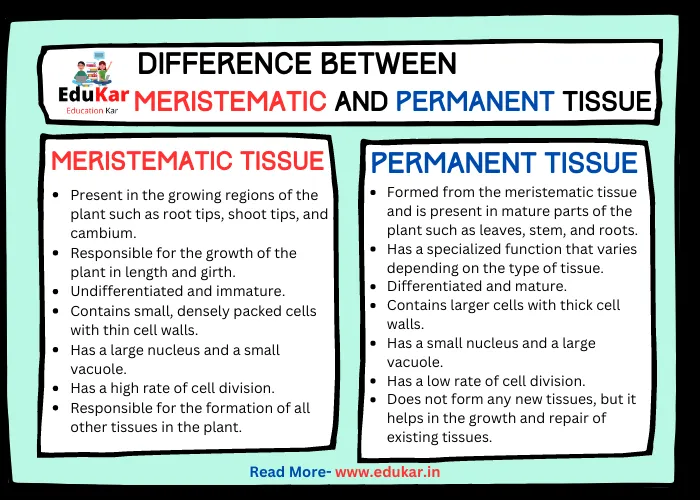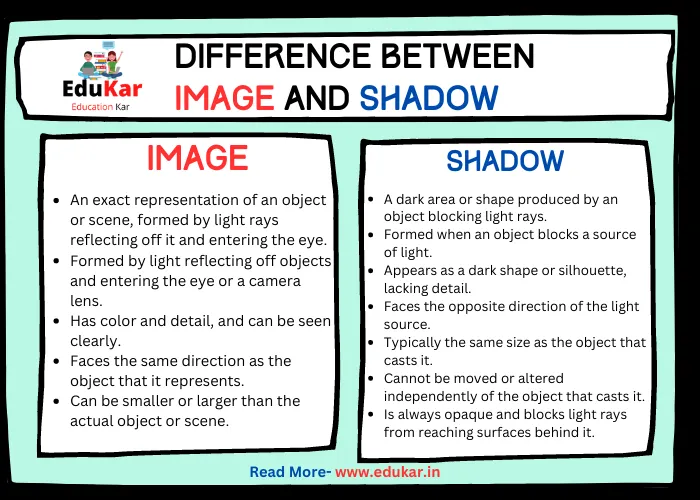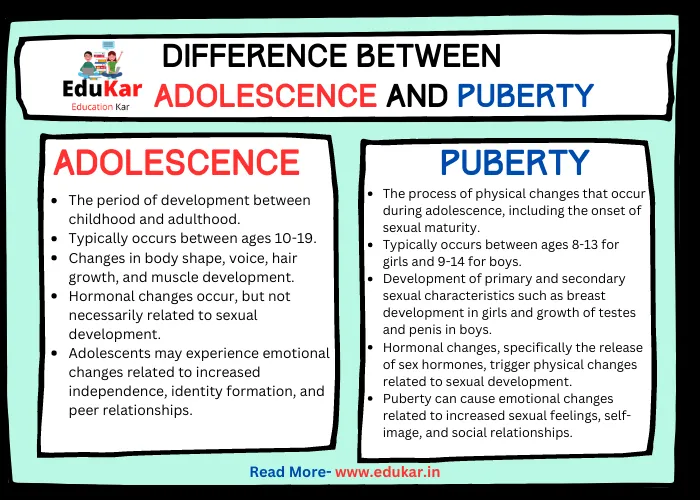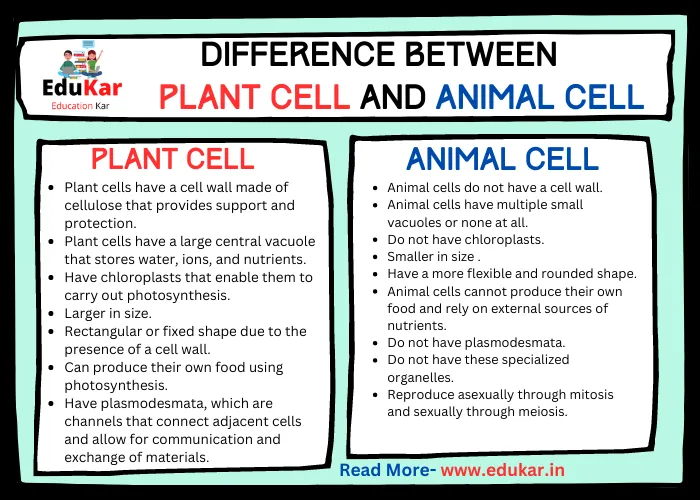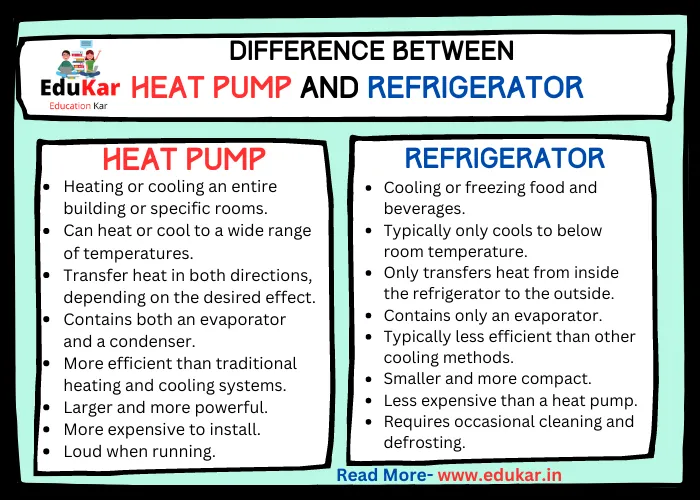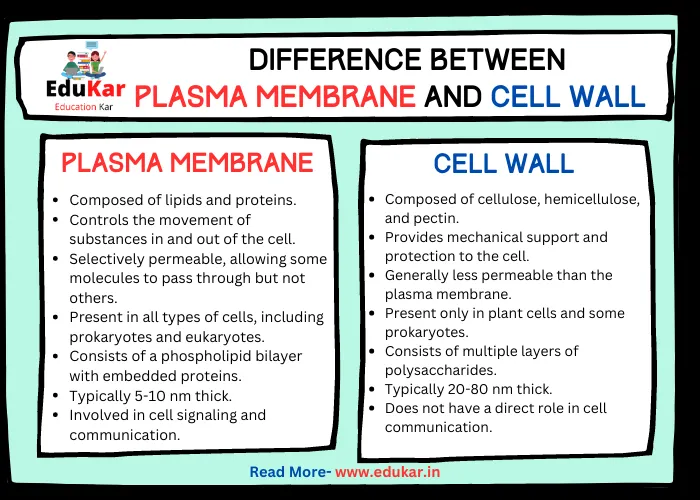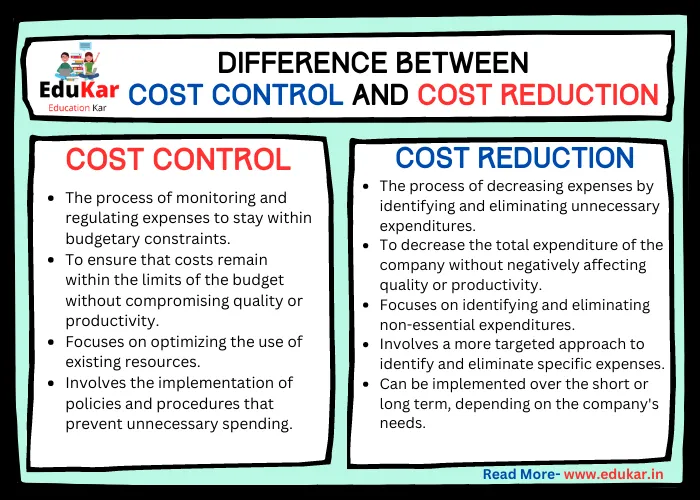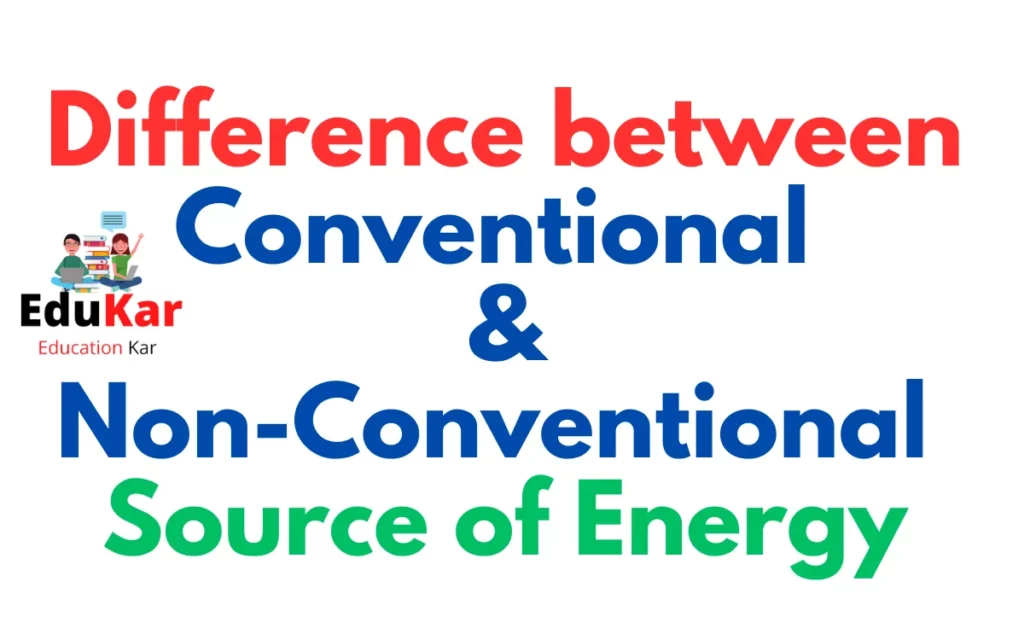Contents
- 1 Introduction
- 2 Milk Teeth
- 3 Permanent Teeth
- 4 Differences Between Milk Teeth and Permanent Teeth
- 5 Care and Maintenance for Teeth
- 6 Sumamry
- 7 FAQs
- 7.1 What are milk teeth?
- 7.2 What are permanent teeth?
- 7.3 What is the main difference between milk teeth and permanent teeth?
- 7.4 How can I tell the difference between milk teeth and permanent teeth?
- 7.5 When do children start losing their milk teeth?
- 7.6 Do milk teeth and permanent teeth performs the same function?
- 7.7 How can I take care of my child’s milk teeth and permanent teeth?
Learn about the key differences between milk teeth and permanent teeth. This article by Edukar explores the characteristics, functions, and timelines of these two types of teeth, helping you understand the important role they play in your oral health.
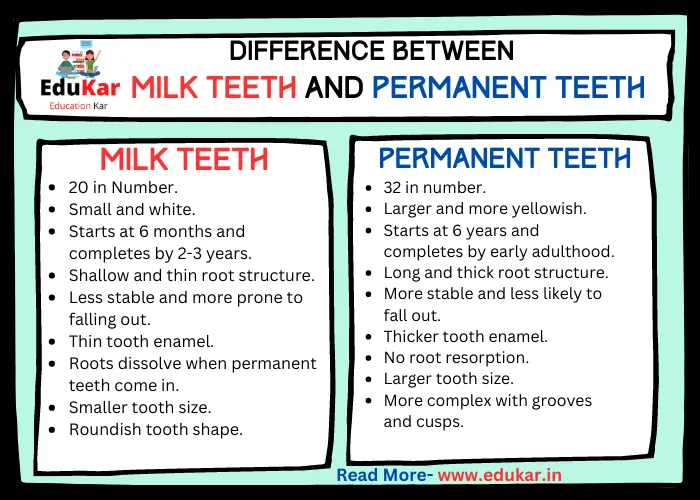
Introduction
Maintaining good oral health is crucial for overall well-being, and this includes taking care of both milk teeth and permanent teeth. While many of us might think that all teeth are created equal, there are significant differences between the two types of teeth. Understanding these differences can help us take better care of our teeth and gums.
Also Read: Difference Between Adolescence and Puberty
Milk Teeth
Milk teeth, also known as primary or deciduous teeth, are the first set of teeth that develop in humans. They typically start to appear around six months of age and continue to erupt until the age of three. By the age of three, most children have all 20 milk teeth, including 10 in the upper jaw and 10 in the lower jaw.
Function
Milk teeth serve several important functions, including helping with chewing and speaking, maintaining proper spacing for permanent teeth, and aiding in the development of facial structure.
Timeline of Eruption
The eruption of milk teeth follows a specific timeline, with the lower central incisors being the first to appear, followed by the upper central incisors, then the upper lateral incisors, lower lateral incisors, first molars, canines, and second molars.
Characteristics
Milk teeth are smaller and whiter than permanent teeth and have a more bulbous shape. They have thinner enamel than permanent teeth, making them more susceptible to tooth decay. The root structure of milk teeth is also different from permanent teeth, with milk teeth having shorter roots.
Permanent Teeth
Permanent teeth, as the name suggests, are the set of teeth that remain in the mouth for the rest of our lives, starting to appear around the age of six. The human adult mouth typically has 32 permanent teeth, including 16 in the upper jaw and 16 in the lower jaw.
Function
Permanent teeth serve a vital function in chewing and breaking down food, aiding in speech, and maintaining the structure of the face.
Timeline of Eruption
The eruption of permanent teeth starts with the first molars, which typically appear around six years of age, followed by the central incisors, lateral incisors, canines, first premolars, second premolars, second molars, and finally, the third molars, also known as wisdom teeth.
Also Read: Difference Between Healthy and Disease Free
Characteristics
Permanent teeth are larger and more durable than milk teeth, with thicker enamel, making them less susceptible to tooth decay. The root structure of permanent teeth is also different from milk teeth, with longer and stronger roots that anchor the teeth firmly in the jawbone.
Differences Between Milk Teeth and Permanent Teeth
| Milk Teeth | Permanent Teeth | |
|---|---|---|
| Number | 20 | 32 |
| Appearance | Small and white | Larger and more yellowish |
| Eruption Time | Starts at 6 months and completes by 2-3 years | Starts at 6 years and completes by early adulthood |
| Root Structure | Shallow and thin | Long and thick |
| Stability | Less stable and more prone to falling out | More stable and less likely to fall out |
| Tooth Enamel | Thin | Thicker |
| Tooth Pulp | Large | Smaller |
| Root Resorption | Roots dissolve when permanent teeth come in | No root resorption |
| Tooth Size | Smaller | Larger |
| Tooth Shape | Roundish | More complex with grooves and cusps |
Care and Maintenance for Teeth
It is essential to care for both milk teeth and permanent teeth, as they both play a vital role in our oral health and overall well-being. Here are some tips for taking care of both sets of teeth:
1. Brush twice a day: Brushing your teeth twice a day is essential for maintaining good oral hygiene. Use a fluoride toothpaste and brush for at least two minutes to remove any food particles and bacteria from your teeth and gums.
2. Floss daily: Flossing is just as important as brushing, as it removes food particles and plaque from between your teeth and gum line, where your toothbrush cannot reach.
3. Limit sugary foods and beverages: Sugary foods and drinks can lead to tooth decay, especially in milk teeth, which have thinner enamel. Limiting your intake of sugary foods and beverages can help prevent tooth decay and maintain good oral health.
4. Regular dental checkups: Regular dental checkups are crucial for maintaining good oral health. Your dentist can identify any issues early on and provide treatment before they become more severe.
Also Read: Difference Between Plant Cell and Animal Cell
Sumamry
Milk teeth and permanent teeth have significant differences in their function, timeline of eruption, characteristics, and care. While milk teeth serve as a temporary set of teeth for children, permanent teeth are designed to last a lifetime. Understanding these differences and taking care of both sets of teeth is essential for maintaining good oral hygiene and overall well-being. Remember to brush and floss daily, limit sugary foods and beverages, and schedule regular dental checkups to ensure healthy and strong teeth for life.
FAQs
What are milk teeth?
Milk teeth are also called deciduous teeth, baby teeth or primary teeth. They are the first set of teeth that develop in humans and usually start to erupt around 6 months of age. Children usually have a total of 20 milk teeth, which are gradually replaced by permanent teeth.
What are permanent teeth?
Permanent teeth are also called adult teeth or secondary teeth. They are the second and last set of teeth that develop in humans and usually start to erupt around the age of 6-7 years. Adults usually have a total of 32 permanent teeth, which are meant to last a lifetime.
What is the main difference between milk teeth and permanent teeth?
The main difference between milk teeth and permanent teeth is that milk teeth are temporary, while permanent teeth are meant to last a lifetime. Milk teeth are smaller and whiter than permanent teeth, and they have thinner enamel. Permanent teeth are larger and stronger, with thicker enamel.
How can I tell the difference between milk teeth and permanent teeth?
Milk teeth are usually smaller, whiter and more delicate than permanent teeth. They have a more cylindrical shape and a flatter biting surface. Permanent teeth are yellower and more robust than milk teeth. They have a more irregular shape and a more complex biting surface.
When do children start losing their milk teeth?
Children usually start losing their milk teeth around the age of 6-7 years, when their permanent teeth start to erupt. The process of losing milk teeth and growing permanent teeth usually lasts until the age of 12-13 years, when the last molars come in.
Do milk teeth and permanent teeth performs the same function?
Milk teeth and permanent teeth both performs the function of biting, chewing and speaking. However, milk teeth are smaller and less strong than permanent teeth, and they are not designed to withstand the same amount of force. Permanent teeth are stronger and more durable, and they are meant to last a lifetime.
How can I take care of my child’s milk teeth and permanent teeth?
To take care of your child’s milk teeth and permanent teeth, you should encourage them to brush their teeth twice a day with fluoride toothpaste, floss once a day, and visit the dentist regularly for checkups and cleanings. You should also limit their intake of sugary and acidic foods and drinks, which can damage their teeth.

